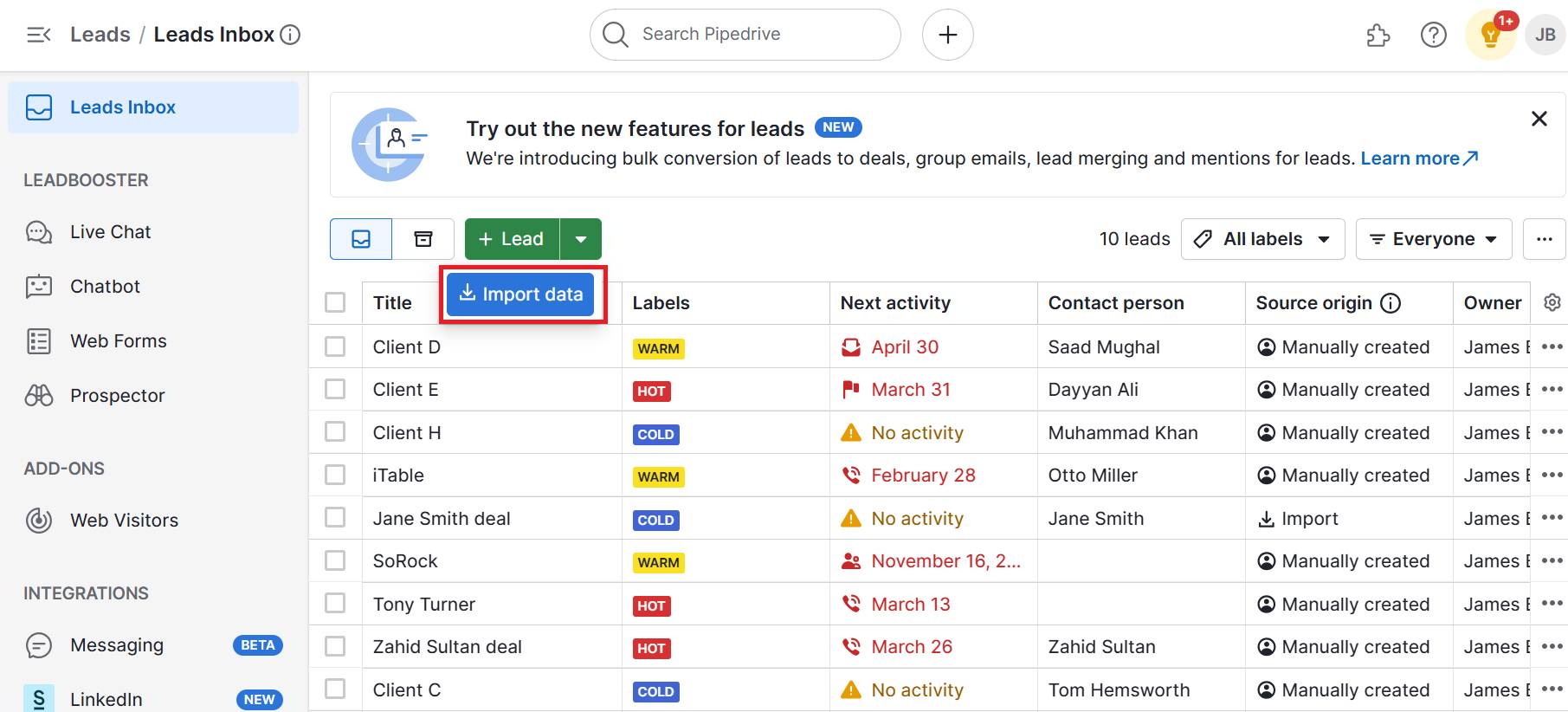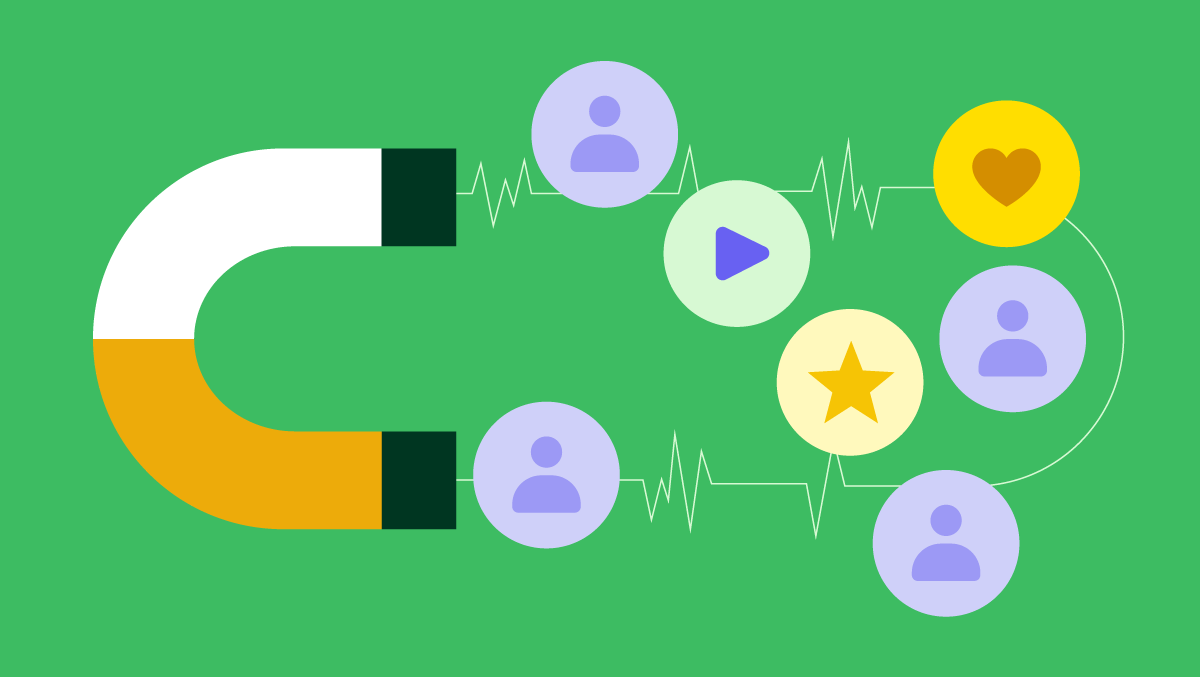Manual admin work in healthcare slows down small teams and leads to mistakes. If you’re a clinic balancing patient care with paperwork or a health tech company delivering solutions, you need efficiency across the board.
Automation offers a powerful way forward. It handles tasks like scheduling and communication, which improves the patient experience.
In this article, you’ll learn why healthcare workflow automation matters and which tasks to focus on. You’ll also discover how to pick the best workflow automation solution for your team.
Why automate healthcare workflows?
Manual healthcare processes increase the risk of medical errors, delays and missed opportunities. Automating these tasks helps your clinic or health tech company operate more efficiently.
Here’s how healthcare workflow automation can help your practice or organization:
Free up valuable staff time. Automation takes over repetitive tasks like sending appointment reminders. Instead of emailing each contact yourself, your software does it for you. It automatically sends personalized follow-ups to patients or B2B leads.
Minimize human errors. Automatic scheduling and data syncing prevent mistakes. When a potential client or patient fills out a form, the software sends that information straight to your service pipeline.
Prevent no-shows. Automatic reminders keep appointments top of mind for clients considering your services. Your system sends a confirmation email when a patient books a session, followed by reminder emails. The same goes for demos in health tech sales.
Boost client acquisition. Automation nurtures leads and maintains consistent communication with clients. It can encourage them to choose your services and refer others.
Improve patient satisfaction. Faster follow-ups and clear communication build trust. Patients who get quick responses are more likely to return and refer others. For tech platforms, this translates to smoother onboarding and better user retention.
Strengthen compliance and oversight. Clinical workflows help you stay on top of deadlines and documentation. For example, you can create a task to send follow-up instructions after every patient visit.
Prevent staff burnout. Happier, less burdened clinicians provide better care. Taking repetitive tasks off their plates helps improve job satisfaction and employee retention. The same applies to customer success teams in health tech managing client loads.
Now you see the compelling benefits of bringing automation into your practice. The next step is to find which tasks will give you the biggest return on your efforts.
Turn Maybe Into Yes With These Killer Follow Up Email Templates
Which healthcare workflows should you automate?
You can simplify many daily tasks in healthcare, with automation proving especially helpful in attracting and managing new patients.
Here are the key areas where automation makes the greatest difference.
Patient intake and onboarding
Patient intake is often the first interaction a person has with a healthcare provider. It involves collecting demographic information, medical history, insurance details and consent forms.
The intake process can be a source of frustration if managed poorly. The table below shows the main steps involved and how automation speeds them up:
Patient intake and onboarding step | How automation software helps |
Digital forms and pre-registration | Patients can fill out digital or web forms at their convenience. These integrate with your electronic health record (EHR) system and ensure accurate data capture. |
Insurance verification | Automated systems can instantly verify insurance eligibility and benefits, flagging any issues. They reduce claim denials and improve revenue cycle management. |
Claims processing and billing optimization | Automation can flag errors, streamline claim submissions and track payment statuses. It leads to faster reimbursements and improved cash flow. |
Automated reminders | Texting apps send appointment reminders via SMS. These messages can contain links to forms, reducing no-shows and improving patient outcomes. |
Consent management | Digital consent forms with e-signature abilities streamline the legal aspects of onboarding. They help you document all necessary permissions securely, maintaining compliance. |
Efficient intake sets the tone for the entire patient experience. With the right tools, you can reduce wait times and free up staff time to care for more patients.
Scheduling and appointment management
Managing appointments for many practitioners and appointment types is a logistical challenge. Manual scheduling takes up significant time and leads to errors like double bookings.
Here’s how automation helps you build more streamlined appointment workflows:
Scheduling and appointment workflows | How automation helps |
Online self-scheduling | Patients can book, reschedule and cancel appointments 24/7 through an online portal. These systems reduce inbound calls and admin workload. |
Real-time availability | Scheduling software gives patients real-time visibility into provider availability. It helps prevent conflicts and shows when resources are available. |
Automation confirmations | Scheduling tools automatically send confirmations and reminders. The messaging provides options to confirm or reschedule, cutting down no-shows. |
Waitlist management | Automated waitlist features can offer patients open slots if available. These offers help optimize schedules and provide timely care for patients in need. |
Automatic scheduling tools make booking easier for patients. They reduce back-and-forth calls and help you create a more reliable appointment experience.
Patient data management
Healthcare companies need accurate, accessible and securely organized patient data. Manual data entry and siloed patient information can slow down your business, increasing the risk of bottlenecks and compliance issues.
Here’s how automation software reduces data management inefficiencies:
Patient data management workflow | How it helps |
Contact record creation | Intake tools automatically create and update contact profiles from intake forms, emails or call logs. |
Data syncing across systems | Healthcare integrations connect your customer relationship management (CRM) system and EHR. They also keep scheduling and billing tools up to date. |
Activity tracking and notes | EHR systems log patient interactions, emails and appointment history in a central profile for quick access. |
Automatic data management frees your team from chasing down information, giving them more time to make smart, data-driven decisions.
For example, a health tech company can use CRM data to focus outreach on high-intent leads based on engagement history. A healthcare provider can analyze appointments and adjust staffing levels during peak demand.
Communication and engagement
A clear communication plan is vital in every part of healthcare. It helps patients, providers and administrative staff stay on the same page.
Relying on manual communication can be time-consuming. Without automatic workflow setups, it’s easy to forget follow-ups and check-ins.
Here are some ways that automation can enable more reliable healthcare communications and engagement:
Communication and engagement workflow | How automation helps |
Automated patient outreach | Healthcare automation systems send automated messages. These might be for prescription refills, post-care instructions or education. |
Secure messaging platforms | Compliant messaging tools enable real-time communication between care team members. These tools allow for quick consultations and efficient sharing of patient cases. |
Chatbots provide 24/7 support for common patient queries. These smart tools facilitate appointment scheduling and send requests to the right staff, reducing the number of incoming calls. | |
Patient notifications | Patient portals notify users about new lab results, provider messages or upcoming appointments. They help patients stay on top of their health information. |
Workflow automation in healthcare keeps patients and other stakeholders informed without adding to your team’s workload.
Staff activities and administrative tasks
Healthcare professionals spend a large part of their day on administrative tasks. Activities include sending internal messages and managing resources while pairing patients with the best-fit care.
Here’s how automation can support your clinic’s or tech team’s administrative tasks:
Administrative workflows | How automation helps |
Task assignment and tracking | Assign tasks to specific staff members based on triggers and track their completion. |
Internal communication | Automate notifications for room readiness or patient discharge. Streamline handoffs between different departments, like nursing and housekeeping. |
Inventory and supply management | For clinics managing physical supplies, automation tracks inventory levels. It ensures you’re always stocked and prepared. |
Onboarding and training staff | Automation streamlines onboarding for new healthcare staff. It sends out training materials and tracks their progress automatically. |
For example, Serenis offers online therapy in Europe. Initially, it managed therapist recruitment using Google Sheets. The spreadsheets made it hard to coordinate tasks.
To combat this, Serenis adopted Pipedrive and built a single recruitment pipeline to see each therapist’s status. Serenis saved three hours a week and worked better with stakeholders, experiencing faster growth.
Beyond patient care: automating core business operations
Healthcare organizations have operational and sales processes that benefit from automation. Since these practices don’t involve protected health information (PHI), there’s a range of tools that can help.
Here are some key examples and use cases for automation in the healthcare industry:
Operational healthcare workflows | How automation tools help |
Sales processes – clinics and B2B health companies offering specialized services or health tech. | CRM tools automate lead capture, task creation and deal stage tracking to keep sales moving. |
Marketing and outreach – building relationships with GPs, specialists and other providers. | Email marketing platforms automate audience segmentation and outreach campaigns. They make it easier to maintain and grow referral networks at scale. |
Event and seminar coordination – hosting webinars, info sessions and community events. | Event management tools and CRMs automate invitations and reminders, reducing manual planning. |
Supplier and equipment management – practices managing relationships with vendors. | Vendor management tools send automatic alerts for contract renewals and payment deadlines. They help you avoid disruptions. |
Franchise or multi-location coordination – businesses operating across many clinics that need visibility. | Project management and reporting tools help you standardize workflows and centralize reporting. You can use them to provide consistent services across locations. |
With automation software, smaller healthcare players can build scalable business processes. These processes ensure their core mission of improving health outcomes remains the primary focus.
Note: Don’t try to automate everything at once. Identify your biggest administrative pain point and start with a pilot project for that specific workflow. Learn from it, then expand.
How to choose the right healthcare automation solution
Choosing the right automation software is like choosing the right tool for a big project. You need to know what job you’re trying to do before you can make a smart decision for your clinic or health tech startup.
First, think about your needs. Ask yourself:
What problems are you trying to solve? Are your patient appointments messy? Is it hard to keep track of calls with potential partners?
What tasks take up the most time? Writing emails by hand? Chasing up paperwork?
What information is most important to you? Is it patient health details or tracking communication surrounding new business deals?
Answering these questions will help you figure out what kind of automation tool you need.
No matter what kind of software you’re considering, these are some important features to consider:
Key things to look for | Why they matter |
Ease of use | You and your team are busy. Your software should be simple to learn and use every day. |
Affordability | Automation should result in long-term cost savings, not set you back. Look for clear pricing that fits your budget. |
Scalability | As your business gets bigger, your software should be able to handle more patients or tasks. Look for scalable plans, add-ons and third-party features that make things easier. |
Customer support | If you get stuck, you need solid customer support. Check customer service availability and reviews to make the right decision. |
Compliance is crucial in healthcare. If you’re dealing with PHI, you must follow strict rules. It protects patient privacy, but limits your software options. | |
Integration capabilities | Look for strong app integrations with your existing healthcare systems to avoid data silos and manual transfers. |
Healthcare has different kinds of information. Some is about patients directly, and some is about running the business.
You might need an EHR or a CRM system, depending on your data. Here’s how they differ.
Electronic health record system | CRM software |
What it is – an EHR system is a digital version of a patient’s medical history. It helps clinical staff and care providers track patient data. | What it is – a CRM system manages your relationships with people outside of patient care. It’s like a smart address book and communication tool for business connections. |
What it does – EHRs securely store patient health data from doctor visits. They support healthcare providers with medicine prescriptions, test result access and patient care decisions. | What it does – tracks interactions with clients, vendors and business stakeholders. It reminds you who you talked to, what you discussed and which actions to take next. |
When you need it – if your goal is to manage patient medical records, an EHR is essential. These systems follow the Health Insurance Portability and Accountability Act (HIPAA). | When you need it – if you sell medical products or services and need to manage sales leads and relationships. Or, when you’re running campaigns to attract business partners and investors, a CRM can organize these efforts. |
To make your choice, decide if you need to manage patient health information or business relationships and sales tasks. Look into different tools and compare your options.
Ultimately, the best healthcare automation solution will help your small business run more smoothly.
Disclaimer: In the US, handling protected health information requires HIPAA compliance. Pipedrive isn’t HIPAA compliant and you shouldn’t put patient names, medical history or other sensitive data into the system.
Use Pipedrive to automate your non-clinical operations and stay organized across different parts of the business. The all-in-one tool handles sales, marketing, vendors and business development, making it an invaluable solution for small clinics and healthcare startups.
Here’s how you can use Pipedrive to automate everyday, non-patient-facing healthcare tasks.
1. Create and qualify new leads automatically
When someone shows interest in your services, Pipedrive’s Leads Inbox helps you store their details and reply fast. With the LeadBooster feature or custom API tools, new leads go to your inbox automatically.
Once a lead enters your system, Pipedrive can create follow-up tasks to keep things moving.
For example, set it up to instantly assign that lead to a sales rep and schedule a call for the next day.
Filters and labels simplify tasks such as finding hot leads or grouping similar contacts. For example, health tech companies can use custom labels like “Hospital buyer” to segment interest. Your team jumps straight into action instead of guessing who to contact first.

If you’re not using LeadBooster or API connections, you can still add leads manually or import them from a spreadsheet.

Either way, once the lead is in your system, Pipedrive handles the next steps. It keeps your team responsive and your sales process consistent.
Beyond managing individual leads, Pipedrive’s reporting features track business performance. You can also see which partners are sending the most referrals and where to focus your efforts.
See which marketing channels are most effective, forecast future sales and improve decision-making.
Take Eye Hospital Denmark as an example. It used to manage its large customer base using a patient journal solution, which didn’t offer sales tools.
The hospital switched to Pipedrive to set up custom automations. These workflows made it much easier to stay in touch with patients and keep them loyal.
2. Track and manage referral relationships
Many healthcare businesses grow through referrals from doctors and partners. Pipedrive lets you track these relationships in a special pipeline without saving patient data.
Start by creating a custom pipeline for partnerships with stages for intro calls, sales proposals and active partners. As you add new contacts, Pipedrive automatically assigns them to the relevant owner and sends introductory emails.

Pipedrive’s automation also helps you stay visible. For example, you could set up a workflow that sends a friendly check-in email if no activity occurs in 30 days.
You can also track partner lifecycle stages, from initial outreach to upsell. Each stage helps your team maintain sales velocity.
Logging all activity in one place means your team always knows where each relationship stands.
3. Run marketing outreach with Campaigns by Pipedrive
Pipedrive’s Campaigns allows you to create professional emails using a simple drag-and-drop tool. Add your logo, adjust templates and make each message feel personal.
Artificial intelligence (AI) features help you write personalized emails and quickly summarize long email threads.

The AI email writer also analyzes your contact’s sentiment, helping you tailor your content and reply with relevance.

Automation keeps all your messaging timely. When adding a new contact to your outreach list, you can trigger a welcome email and schedule a check-in reminder a week later.
As your campaigns progress, Pipedrive tracks email metrics like open rate, click rate and unsubscribes. See what works and adjust your strategy accordingly.
Beyond marketing-specific emails, Pipedrive automates your other non-clinical patient engagement. For example, send satisfaction surveys, invites to educational webinars or general health tips to build loyalty and encourage referrals.
The CRM supports outreach for B2B partners, health tech buyers and clients alike. Leverage its powerful workflow automation solution to keep your network engaged and informed.
In health tech B2B sales, where buying cycles are long, staying top of mind is critical. Automated email workflows help you maintain momentum across the funnel.
Final thoughts
Workflow automation for healthcare keeps your company running smoothly. It takes over key tasks like scheduling and business operations, freeing up hours of manual work each day.
Start by finding the manual processes that take up the most time. Then, choose relevant automation tools that can scale with your organization.
Try Pipedrive free for 14 days to see how it can cut the administrative burden and optimize your healthcare operations.





